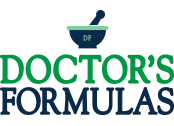Oxidative Stress- Related Neurodegeneration & S-adenosylmethionine
S-adenosyl-L-methionine (SAM) is the main biological methyl donor in transmethylation reactions, consisting in the transferring of a methyl moiety to different substrates including DNA, proteins, lipids and RNA.
SAM level in the organism decreases with aging and restoring the original levels through exogenous supplementation is an important tool for the improvement of many vital functions.
Indeed, SAM deficiency may contribute to the onset of several diseases, i.e. depression, liver diseases, osteoarthritis and senile neurological disorders such as Alzheimer’s and Parkinson’s diseases.
Recent evidences indicate that SAM may have an involvement in oxidative stress, a process which typically involves an alteration of cellular sulfur amino acids homeostasis.
SAM is not only the principal methyl donor, but also a precursor of glutathione, the major endogenous antioxidant, whose role in counteracting oxidative stress is well known.
In this review we will highlight the role of SAM not just as a methyl-donor but also as a regulator of different metabolic pathways involved in the antioxidant response in brain related disorders.
The cell’s ability to perform methylation reactions is loosely described as “methylation potential”.
Methylation status is essential for normal brain biology, and low methylation potential is associated with markers related to neurodegeneration. The importance of methylations for normal brain functions is well known.
SAM level in the organism decreases with aging and restoring the original levels through exogenous supplementation is an important tool for the improvement of many vital functions.
SAM deficiency may contribute to the onset of several diseases. It is associated to the development of osteoarthritis, liver cirrhosis, depressive states and senile neurological diseases such as Alzheimer’s and Parkinson’s diseases.
Exogenous SAM is mainly administered by the oral route, although injectable formulations also exist.
SAM in the form of its stable p-toluensulphonate or butanedisulfonate salt has been used for more than 30 years in the treatment of depression, liver disorders, and musculoskeletal and joint disorders such as osteoarthritis and fibromyalgia.
The antioxidant activity of SAMe is mainly due to its role in transsulfuration as a precursor of GSH, the major cellular antioxidant, and as activator of CBS via transsulfuration pathway.
SAMe effect was largely studied in liver disease, also with attention to its antioxidant properties.
SAMe led to inhibition of liver lipid peroxidation in a rat model of acute biliary obstruction and reduced mitochondrial oxidative stress in a rat model of liver ischemia/reperfusion.
SAMe was also found to be able to prevent and reverse hepatotoxicity associated with several drugs such acetaminophen and alcohol injury decreasing lipid peroxidation associated with tissue damage and increasing GSH levels.
Moreover, SAMe also inhibits alcohol and lipid oxidation mainly by Fe2+ chelation and inhibition of Fe2+ autoxidation. This could represent an important mechanism by which SAMe exerts cellular protective actions and reduces oxidative stress in biological systems.
Taken together, all these observations stress the role of SAM not just as a methyl-donor but also as a regulator of different metabolic pathways involved in the antioxidant response.
As a nutritional supplement, SAM has been shown to prevent or alleviate hallmarks and features associated with dementia and AD, acting on DNA methylation and restoring brain oxidative status, suggesting that it could be used as a neuroprotective dietary supplement that compensates for different insults in age related neurodegenerative diseases.
Story Source:
https://www.graphyonline.com/archives/IJCND/2016/IJCND-109/
International Journal of Clinical Nutrition & Dietetics Volume 2 (2016), Article ID 2:IJCND-109, 8 pages
https://doi.org/10.15344/2456-8171/2016/109

